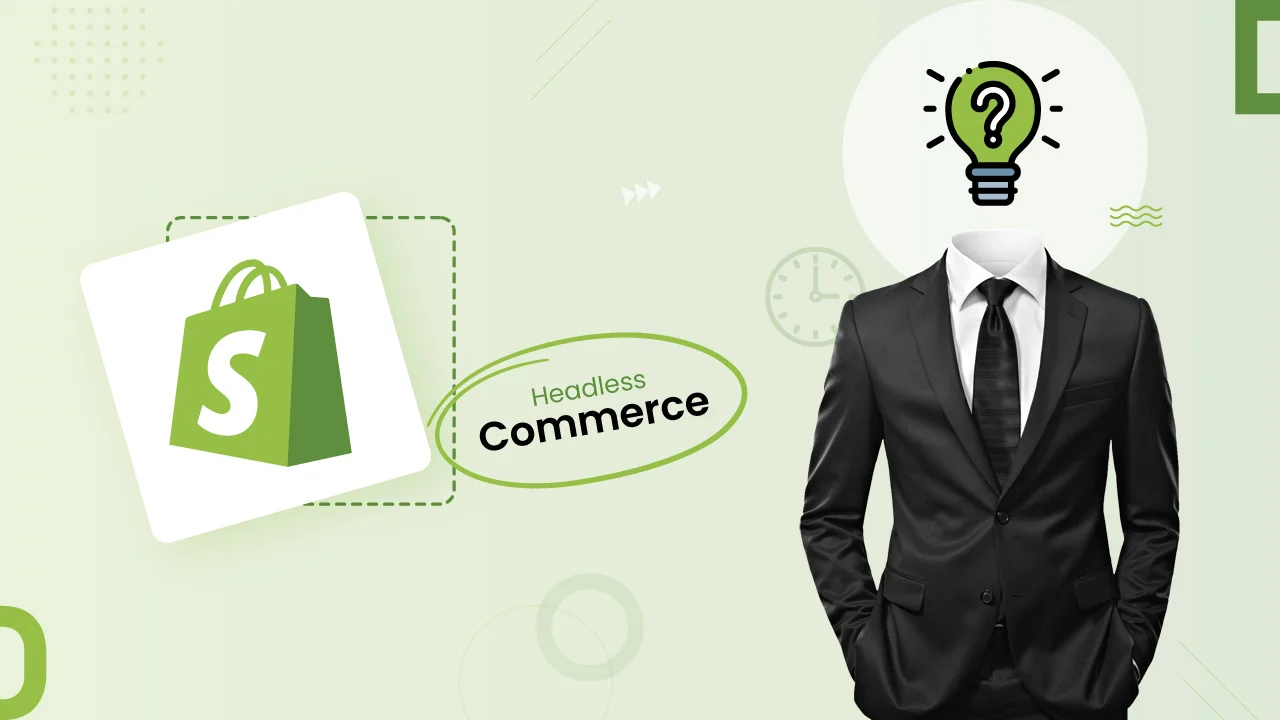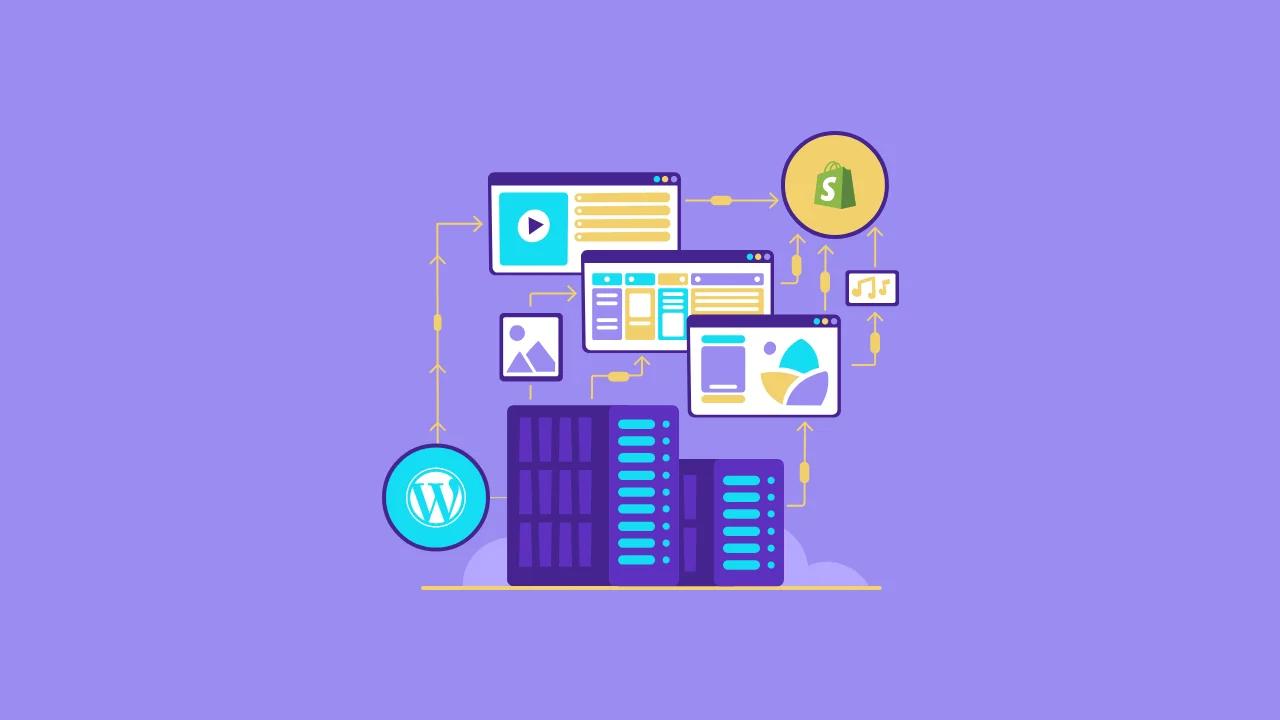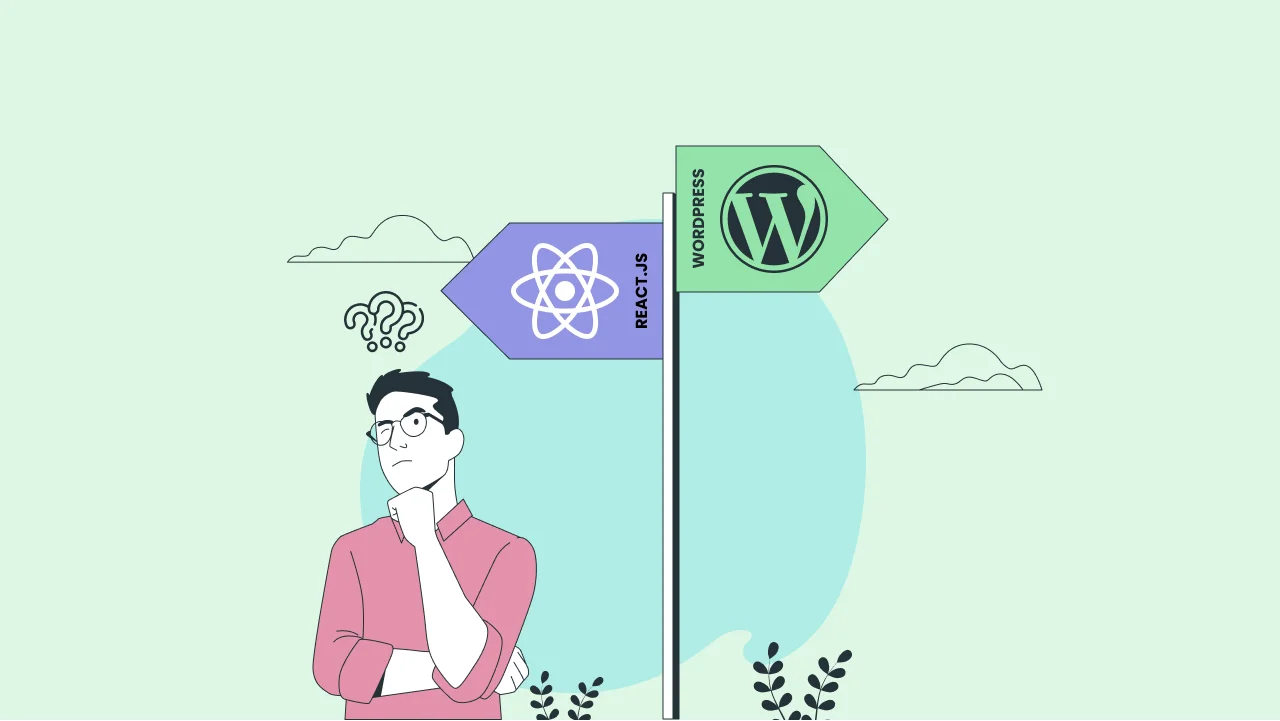Why have a head and have an extra load when you can go all headless with shopify?
Isn’t it an obvious question coming to every developer’s mind?
It would but a simple answer to this curious question is – There is a right time for everything and if it’s done early or later, it would just go wrong.
Let’s break it down for you!
Now, think of your e-commerce store as a swanky convertible car. Shopify is your powerful engine, and the ‘head’? That’s the dashboard and steering wheel – the part your customers interact with from outside.
Okay, so what if I told you that you could swap that dashboard for any design or device your heart desires without changing the engine?
Possible?
Not possible?
Let’s see.
Welcome to the world of headless commerce, where the only head you’re dealing with is the one you’re scratching, pondering the endless possibilities.
What exactly is Headless Shopify?
Headless Shopify is like decoupling the Siamese twins of e-commerce. It separates the front-end (the head) from the back-end (the body) of your online store.
It means you can update, tweak, and completely revamp the customer-facing side of your shop without messing with the gears running the show behind the curtain.
How does headless Shopify work?
Think of headless Shopify as a backstage pass. You get to orchestrate the show (back-end) without the audience ever seeing the hustle. It’s like a puppet show where you can change the puppets and the stage but still have the same puppeteer.
The back-end remains robust and unaltered, while the front-end becomes a shapeshifter, adapting to screens, devices, and platforms galore.
The problem with traditional Shopify
Traditional Shopify, as great as it is, can sometimes feel like wearing a straitjacket. It’s a one-size-fits-all solution where customization can have its limits.
If you want to leap out of that jacket and break free with a custom storefront, you’re going to need to go headless.
What’s the edge Advantage?
Flexibility is the name of the game with headless Shopify. You’re no longer handcuffed to a specific theme or layout.
Want to push the envelope with a VR shopping experience? Go for it.
Need a mobile app that syncs seamlessly with your store? It’s a breeze. Plus, your site’s speed could give Usain Bolt a run for his money.
Any Disadvantages?
Sure, it’s not all sunshine and rainbows. Going headless can be like opening Pandora’s Box – it comes with complexity.
You’ll need a dream team of developers, and there might be more APIs in your future than in a bowl of alphabet soup. Plus, costs can creep up faster than you can imagine.
Does it make any Difference to the Customers?
In the end, it’s all about the shopping experience. Customers don’t care about the tech under the hood; they care about cruising through your store with the top down, wind in their hair, finding what they need with ease.
A seamless and speedy interface? That’s the dream – and headless commerce can make it a reality.
So there you have it. Going headless with Shopify is like upgrading to a smartphone when you’ve been stuck with a pager. It’s not for everyone, and timing is everything. But when it’s right, it’s a game-changer.
So ask yourself, are you ready to lose your head and get ahead?
Keep it savvy, keep it slick, and most importantly, keep it fun – just like we like our tech talks.
How to Implement Headless Shopify?
Going headless with Shopify is like turning your online store into a transformer. You keep the powerhouse (the backend) and swap out the face (the frontend) whenever you feel like it.
So, how do you pull off this magic trick?
Select a Frontend Framework
Look into it consciously and decide on a frontend technology that best suits your project requirements. Popular choices include React, Vue.js, and static site generators like Gatsby or Next.js.
Understand the Shopify Storefront API
Familiarize yourself with the Shopify Storefront API, which allows you to fetch data from your Shopify store programmatically. Review the API documentation to understand the available endpoints and data structures.
Set Up Authentication
Configure authentication for the Shopify Storefront API by generating and securing an access token. This token is essential for making authenticated requests to Shopify.
Develop the Frontend
Get a grip on the chosen frontend framework to create the user interface. This involves building components, pages, and ensuring a seamless user experience that interacts with the Shopify backend.
Integrate with the Storefront API
Establish communication between your frontend and the Shopify Storefront API. Implement API calls to retrieve products, collections, and other resources, and to manage customer interactions like cart management and checkout processes.
Testing and Optimization
Rigorously test the frontend application to ensure it interacts correctly with the Shopify backend. Optimize for performance, SEO, and user experience.
Deployment
Once the frontend is developed and tested, deploy it to a suitable hosting environment. Ensure that the deployment settings are configured to handle production traffic and that the connection to the Shopify backend is secure.
Different Approaches to building Headless Frontends
Not all frontends are created equal, and that’s the beauty of headless. You can go for a pre-built solution, faster than a microwave minute, or custom-build your storefront, getting your hands code-deep in a bespoke shopping experience.
Whether you opt for a JAMstack architecture or a full-stack framework, make sure it’s as responsive.
Headless Shopify Use-Cases
“But when do I go headless?” I hear you cry.
Here’s the right thing for you – You’re selling hotcakes, but your current platform moves like it’s wading through molasses. Or maybe you want to sell through Instagram, voice assistants, or a VR showroom.
If you’re nodding along, then, buddy, it’s time to decapitate that digital storefront and set your sights on headless.
Real-Life Examples to watch out on
Need some inspo? Look at the big shots. Brands like Gymshark and Staples are rocking the headless scene, serving up web pages faster than a cheetah on a sugar rush.
Gymshark is a prime example of a brand leveraging the headless commerce architecture to its fullest. By decoupling the front end of their website from the back-end systems, Gymshark delivers content and products to their consumers with lightning speed, reminiscent of a cheetah sprinting across the savannah.
This agility in web performance is critical for their target audience, who value quick access to fitness apparel. Furthermore, Gymshark’s unique user experience, which stands out as much as a unicorn among horses, is a direct result of their ability to rapidly deploy customized content and interfaces that resonate with fitness enthusiasts.
On the other hand, Staples, the well-known office supply retailer, has also embraced the headless commerce model to revamp their online presence. By adopting this approach, Staples could serve up web pages with remarkable efficiency, making online shopping seamless for customers who are often in a hurry to secure their office essentials.
The headless architecture allowed Staples to offer a personalized shopping experience, where every interaction feels as personalized and unique. This level of customization was possible because Staples utilized various front-end tools to best showcase their products and services, without being constrained by the limitations of traditional e-commerce platforms.
They’ve tailored their user experience to be as unique as a unicorn at a horse parade, all thanks to the headless approach.
Frequently asked Questions
Got questions? CMSminds got answers!
From “Will going headless mess with my SEO?” to “Can my grandma still use my webshop?”, the headless Shopify community is bustling with insights.
Spoiler alert: SEO is a big “heck yeah,” and as for Grandma, let’s just say, if she can handle WhatsApp, she can handle a headless shop.
Remember, going headless isn’t just a trend; it’s a strategic move. It’s about keeping up with the Joneses while carrying a rocket launcher. So, when you decide to cut ties with the conventional, make sure you’re ready to embrace the boundless possibilities that headless commerce offers.
Keep it zippy, keep it smart, and most importantly, keep it human. Because at the end of the day, whether it’s head-on or headless, it’s the human touch that turns browsers into buyers.
Now go out there and be the headless hero that the eCommerce world deserves!
But, remember, if you need help in shopify development services in Raleigh, we are always just a call or mail away!



